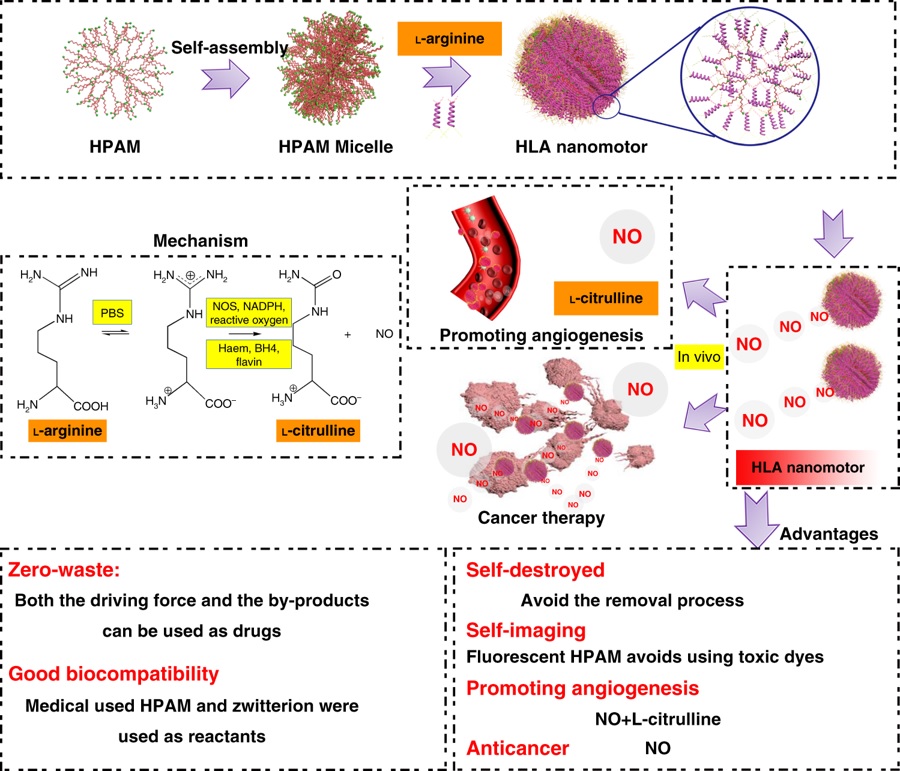沈健教授、毛春教授课题组在NATURE COMMUNICATIONS发表研究论文
Bio-inspired nitric-oxide-driven nanomotor
Wan, MM (Wan, Mimi)[ 1 ] ; Chen, H (Chen, Huan)[ 1 ] ; Wang, Q (Wang, Qi)[ 1 ] ; Niu, Q (Niu, Qian)[ 1 ] ; Xu, P (Xu, Ping)[ 1 ] ; Yu, YQ (Yu, Yueqi)[ 1 ] ; Zhu, TY (Zhu, Tianyu)[ 1 ] ; Mao, C (Mao, Chun)[ 1 ]*(毛春); Shen, J (Shen, Jian)[ 1 ]*(沈健)
[ 1 ] Nanjing Normal Univ, Sch Chem & Mat Sci, Natl & Local Joint Engn Res Ctr Biomed Funct Mat, Nanjing 210023, Jiangsu, Peoples R China
NATURE COMMUNICATIONS,201902,10,966
Current chemical-fuel-driven nanomotors are driven by gas (e.g. H-2, O-2, NH3) which only provides motion ability, and can produce waste (e.g. Mg(OH)(2), Pt). Here, inspired by endogenous biochemical reactions in the human body involving conversion of amino acid L-arginine to nitric oxide (NO) by NO synthase (NOS) or reactive oxygen species (ROS), we report on a nanomotor made of hyperbranched polyamide/L-arginine (HLA). The nanomotor utilizes L-arginine as fuel for the production of NO both as driving force and to provide beneficial effects, including promoting endothelialisation and anticancer effects, along with other beneficial by-products. In addition, the HLA nanomotors are fluorescent and can be used to monitor the movement of nanomotors in vivo in the future. This work presents a zero-waste, self-destroyed and self-imaging nanomotor with potential biological application for the treatment of various diseases in different tissues including blood vessels and tumours.

文章链接:
https://www.nature.com/articles/s41467-019-08670-8
版权与免责声明:本网页的内容由收集互联网上公开发布的信息整理获得。目的在于传递信息及分享,并不意味着赞同其观点或证实其真实性,也不构成其他建议。仅提供交流平台,不为其版权负责。如涉及侵权,请联系我们及时修改或删除。邮箱:sales@allpeptide.com